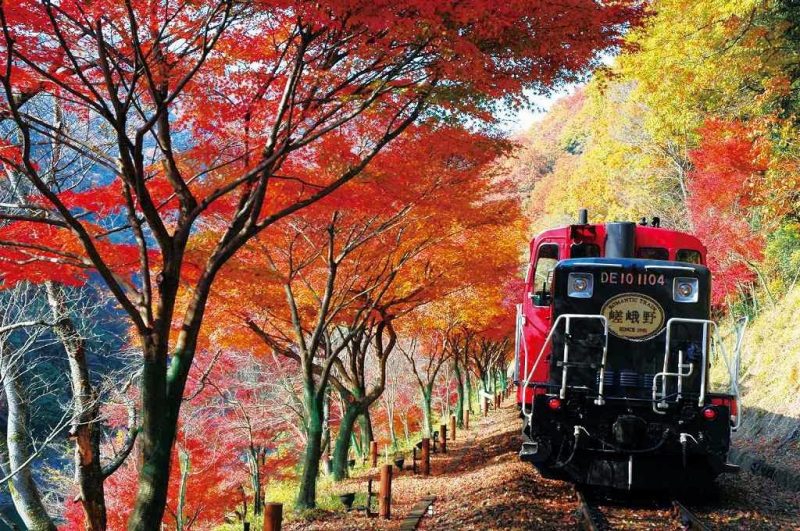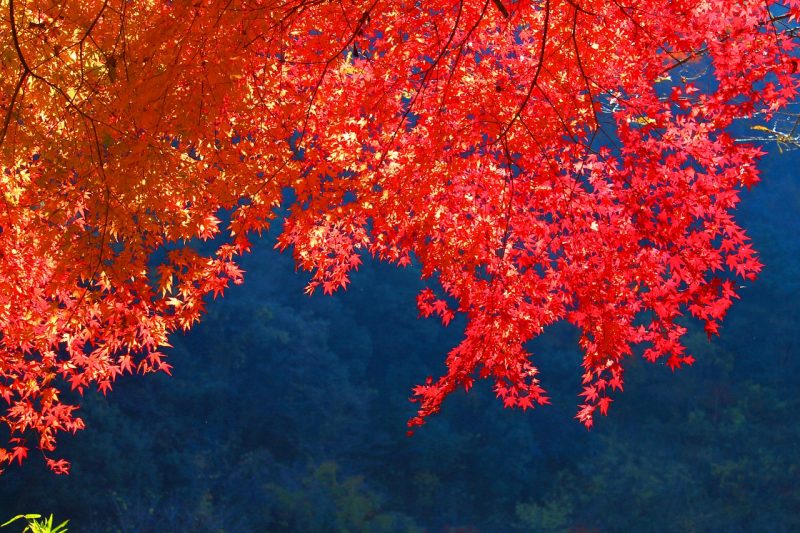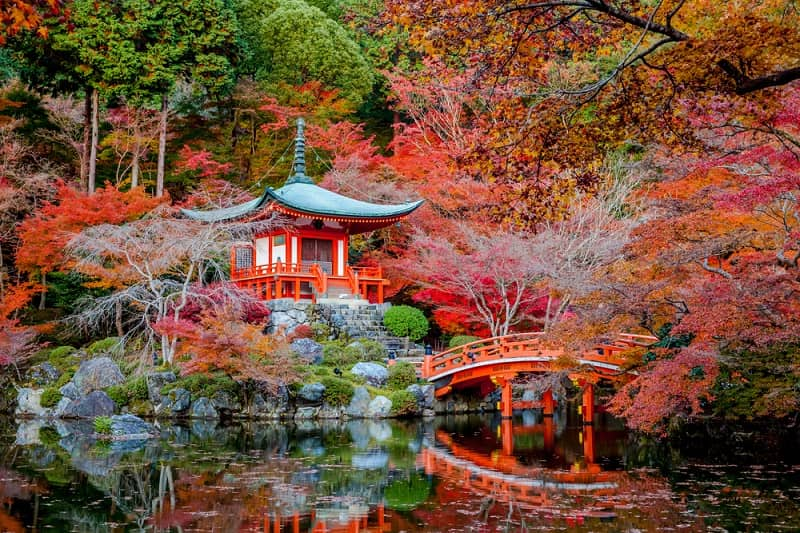Many travelers often consider autumn in Japan to be the most beautiful time to visit.
As temperatures dip after the scorching summer, the colors of the leaves change into vibrant shades of orange, red, yellow, and brown. This natural phenomenon is called koyo or momiji (meaning red leaves).
The Japan fall foliage is a magnificent sight that has inspired artists and poets for centuries, and travelers come from all over the world to view it.
This guide tells you everything there is to know about visiting Japan during autumn.
Table of Contents
When is Autumn in Japan?
Fall in Japan generally spans from September through early December, with the timing of fall colors depending heavily on the region.
The season typically begins in Hokkaido around mid-September, when cooler air arrives earlier due to its northern location.

The colors then sweep southward, reaching the Kanto region (Tokyo) and Kansai (Kyoto, Osaka, Nara) between mid-October and late November, and continuing into December in the milder southern areas of Kyushu.The period is commonly referred to as the maple leaf season, or momiji season, because the brilliant red hues of Japanese maple trees are the most iconic autumn sight.
Fall foliage forecast for 2025
The turning of the leaves in Japan varies due to temperature, elevation, and latitude, and the best time to experience it differs every year.
In general, the autumn foliage season begins in mid-September on the island of Hokkaido, the northernmost island.
In other parts of Japan, like Tokyo and Kyoto, the best time to see fall colors typically range from mid-October through early December. Peak fall foliage in each area typically lasts between 2 weeks to more than a month.
While many regions peak in November, some areas can start changing as early as September, or as late as December. When temperatures turn cold early, the fall colors can appear up to several weeks early, and vice versa.
Here’s a look at key places for each viewing period:
| Region / city | Typical start of color change | Peak viewing period | Notes |
| Hokkaido (Daisetsuzan, Sapporo, Hakodate) | Mid–September | Late September – Early October | The northernmost island shows the earliest colors. Mountain ranges like Daisetsuzan are famous. |
| Tohoku (Aomori, Nikko, Sendai) | Late September | Early – Mid October | Lake Towada, Oirase Gorge, and mountainous areas peak first, with lower elevations following. |
| Nagano & Japanese Alps (Kamikochi, Tateyama) | Late September | Early – Mid October | High-altitude regions change early, alpine scenery offers spectacular views. |
| Kanto (Tokyo, Nikko, Hakone) | Mid–October | Late October – Mid November | Tokyo city parks change later, surrounding mountains (Nikko, Hakone) are earlier. |
| Kansai (Kyoto, Osaka, Nara) | Mid–October | Mid November – Early December | Famous temples and gardens in Kyoto peak in late November, lasting into early December. |
| Chubu (Takayama, Kanazawa, Mt. Fuji area) | Mid–October | Early – Mid November | Alpine towns and Fuji Five Lakes show vibrant colors; timing varies with altitude. |
| Chugoku (Hiroshima, Okayama) | Late October | Mid – Late November | Momiji-dani Park in Miyajima is especially popular in November. |
| Shikoku (Matsuyama, Iya Valley) | Late October | Mid – Late November | Mountain valleys and remote gorges peak in mid-November. |
| Kyushu (Fukuoka, Kumamoto, Nagasaki) | Early November | Mid November – Early December | Milder climate delays foliage slightly, but peaks can be dramatic. |
Take a look at the best places to see the autumn leaves in Japan to plan the perfect route.

Momijigari: Red leaf hunting
Autumn in Japan is known as Aki (秋) and the fall foliage is classified by 2 different terms: Koyo (紅葉) and Momiji (紅葉).
Koyo describes red and yellow fall colors, while Momiji specifically applies to the intensely red maple leaves that are particularly notable during the season.
The activity of searching for the most striking shades of red fall leaves is known as Momijigari (red leaf hunting). It has been popular in Japan for centuries and is now a major draw for tourists.
The history of Momijigari
The tradition of Momijigari has had a profound influence on Japanese culture since the Heian period (794-1195), with hunting for maples particularly popular across the country.
Momijigari features heavily in eighth-century Manyoshu poetry, and the classical Heian Period novel ‘The Tale of the Genji’.
For Buddhists, it is a moment that is important both spiritually and symbolically, as it reminds us that life is passing.
The cultural significance of maple leaves
The maple leaf symbolizes fall in Japanese culture, and its use is widespread.

Maple-shaped cakes are typical during the fall, and the leaves themselves are often eaten as tempura. There are various varieties of maple leaf tempura served throughout the country during the season, often accompanied by a cup of Japanese tea.
Planning an autumn trip to Japan
If you want to experience Momijigari in Japan, it’s advisable to start planning your trip around 6 months in advance, particularly if you wish to visit the most popular locations.
Like the cherry blossom season in the spring, accommodation in Tokyo and Kyoto can fill up quickly for the fall foliage season, so it is advisable to make reservations as soon as possible.
It is always a good idea to check the annual fall foliage forecast as soon it is available, as the exact dates for premium viewing can vary between years and the different regions of Japan.
